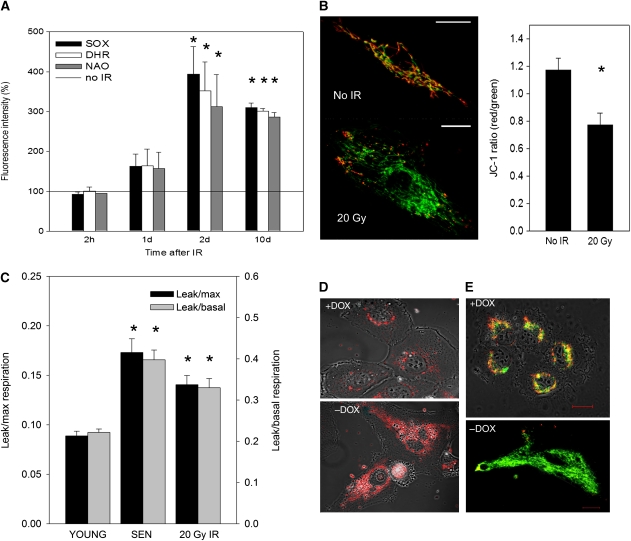Figure 1.
Mitochondrial dysfunction and ROS production are consequences of senescence. (A) MitoSOX, DHR and NAO fluorescence in irradiated MRC5 human fibroblasts at the indicated times after irradiation as measured by flow cytometry (M±s.e.m., n=3). Asterisks indicate significant differences to non-irradiated controls (ANOVA). (B) Representative JC-1 confocal fluorescence images of MRC5 cells (red fluorescence indicates high MMP, green indicates low MMP, bar: 25 μm) and quantification of JC-1 ratios (M±s.e.m., n=3). Differences are significant with P<0.001 (Mann–Whitney rank sum test). (C) Oligomycin-resistant (mitochondrial proton leak) respiration as proportion of basal (grey bars) and maximum (FCCP-) stimulated (black bars) mitochondrial oxygen uptake in young proliferating (YOUNG), deep senescent (SEN) and irradiated (IR) cells (M±s.e.m., n=9–12). IR and SEN are different from YOUNG with P<0.05, but not from each other (ANOVA). (D, E) Doxocycline removal for 8 days (−DOX) in TRF2ΔBΔM cells increased MitoSOX fluorescence (D) and decreased JC1 red/green ratio (E). Bar: 20 μm. Micrographs are representative for three experiments.

